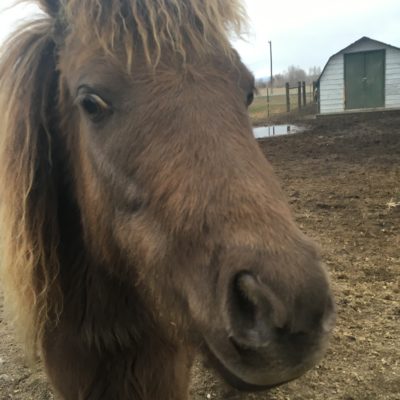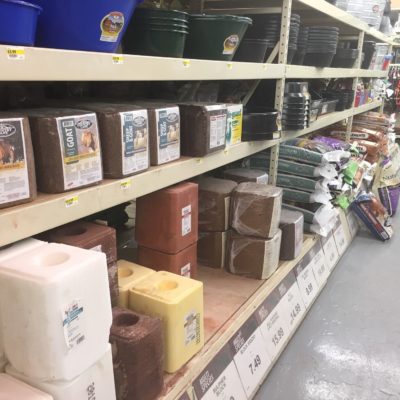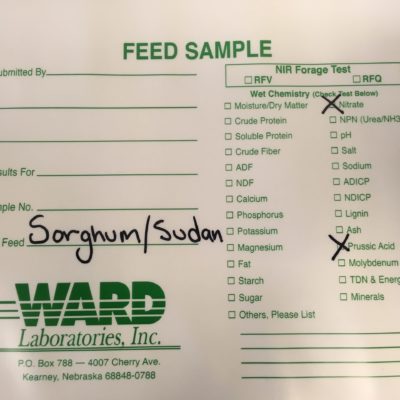Proper hay sampling procedures are a must. Today I was brought a sample from a single bale of mixed hay. I was asked to sort the alfalfa from the grass hay and use those as individual, separate samples. I was not the only one whose first reaction was, are they planning on sorting it out every time they feed? (Of course not!) For someone who is very passionate about providing producers with accurate, precise and above all else useful results, this request was difficult to stomach.
No matter what species of animal is being fed, lab results are a useless waste of producer time and lab time if they are not representative of the entire pile of feed or stack of hay. So, when sampling hay the goal is to provide WARD Laboratories Inc. with a representative sample. Here are 5 steps to obtain a representative hay sample:
1. Define ‘lots’ for hay sampling
A ‘lot’ can be one field of the same or a mixed species which has been harvested and baled in one consecutive time frame. For example, if I had three fields two alfalfa and one mixed alfalfa and grass. I harvested and baled one alfalfa field, then the mixed field and then a few weeks later finally harvested and baled the second alfalfa field. I would define 3 separate lots based on species and time of harvesting and bailing.
2. Use a hay probe
Using a hay probe will ensure samples representative of each bale. The probe can cut through the side of the bale and take sample from deeper within the bale than a hand grab can. Additionally, a hay probe does not discriminate against delicate leafy material the way fingers do. A sample taken with a hand grab will test falsely low in protein and energy . This is because the leafy material, which is high in protein and energy, slips through fingers.
3. Take a minimum of 20 probes per lot
If the lot has less than 20 bales, then take one probe per bale. If more than 20 bales are in a lot take a minimum of 20 samples to represent that lot properly. The National Forage Testing Association has done research to prove this number of probe samples decreases likelihood of a non-representative sample. When choosing bales to probe it is also important to not leave out ‘bad looking bales’ or intentionally include ‘good looking bales’. Sample as randomly as possible. Come up with a system to determine which bales to sample and follow it each time you sample a new or different lot.
4. Split the sample using the cone and quarter method
Once 20 cored samples are obtained, they will not all fit in a quart sized Ziploc bag. Therefore, the sample must be mixed and split until the sample is small enough to fit in the bag. On a tarp, large newspaper or other clean surface, mix the cores then pile them up into a cone like shape. Divide the cone into 4 quarters discarding two quarters diagonal to each other. Repeat the process with the remaining two quarters. Continue the process until the remaining two quarters can fill a quart sized Ziploc bag. Then, send the sample to Ward Laboratories Inc. and save the rest of the sample in a cool dry place. The saved sample may come in handy if the original gets lost in the mail, or a resample is needed.
5. Send the sample to Ward Laboratories Inc.
When placing the sample in an envelope or mailer, be sure to include your name, address, phone number. Write the test on the sample bag or call into be sure you receive the information you want on your report. Remember, if a result looks suspicious, Ward Laboratories Inc. will rerun tests to ensure accuracy upon request.
For further information on representative hay testing or to become a certified sampler check out foragetesting.org.




